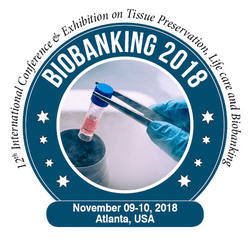
Svetlana Gramatiuk
Ukraine Associated of Biobank, Ukraine
Title: Biobank sustainable plan in developing countries
Biography
Biography: Svetlana Gramatiuk
Abstract
Quality biological samples stored in Biobanks are essential for the provision of appropriate health services and also act as a reservoir for the development of precision medicine and biotechnological innovation. The Ukrainian Association of Biobanks (UAB) coordinates the network procedures, based on ESBB, ISBER, BBMRI, and NCI guidelines, which are standardized across the entire network. Policies and documents including Patient Consent Policy, Patient Information Sheet, Biobank Informed Consent Form, and Sample Application Form after extensive and constructive discussion in UAB have been agreed for use in each hospital and medical institute. An optimum sequence for document preparation and submission for review have been outlined. At the outset, UAB employed ESBB standard operating procedures (SOPs) for tissue collection, storage, and processing. Harmonization of policies and SOPs is an ongoing activity and standardization is achieved via workshops and training in data protection, database management, data sharing, tissue collection and storage, ethical considerations, sample access, and quality control. It was important at the initiation of UAB to develop a sequence for policy development, review, and approval. It was essential that policies were compliant with both national and European guidelines and directives. UAB introduced a standardized Patient and Volunteers Information Letter, Informed Consent Form of Biobank and Sample Access Policy in Ukraine for the first time. It was difficult, in the beginning, to distinguish the order in which to develop, to agree and finally to submit documents of UAB for review. The Ireland pathway was identified as the most effective for Ukrainian local circumstances and it was decided to adopt a similar sequence of document development and submission. Fist, the consensus was reached with each hospital within the network. Second, a review of documents by the Risks and Legal Department in UAB was performed. Parallelly a formal legal statement was obtained from an independent lawyer specialized in medical research.
Conclusion: The UAB short- to medium-term objectives include expanding the current network and to include each of the major medical research centers in Ukraine. Enlargement of the network could be undertaken with modest capital investment and UAB medium size will facilitate a swift and dynamic approach to network expansion. Ideally, the Ukrainian biobank network should be integrated into working groups within larger European networks in the future as it is affiliated with the Science and Innovation Working Group for international biobanking ESBB. By now, the UAB is reaching its goal: to develop infrastructure and facilitate the biomedical research nationally and internationally.

